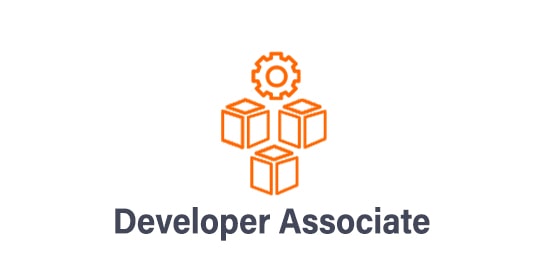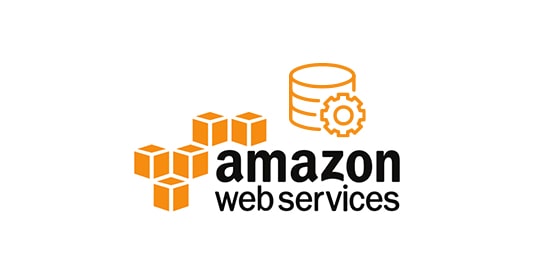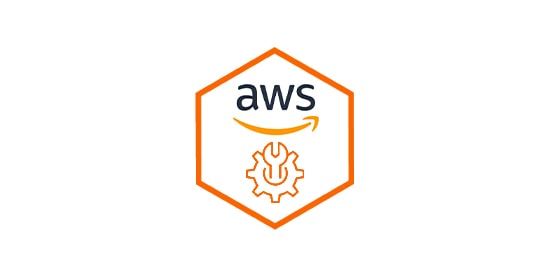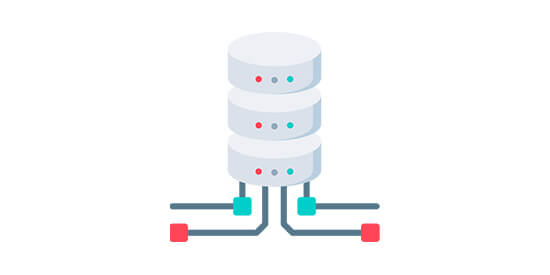aws sysops certification
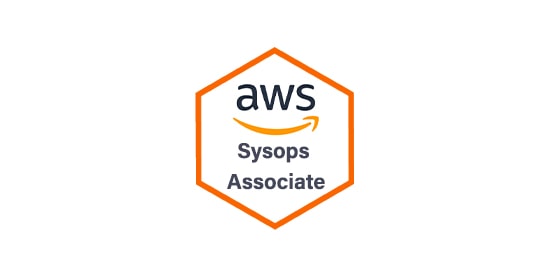
Aws Sysops Associate Training
AWS SysOps Associate is a training course from QTSInfo which has been designed for the people who are doing jobs in DevOps. Our course is affordable and the concepts will help you in passing AWS SysOps Associate Online exam. The AWS SysOps Associate course will let you know about the advanced concepts that are used in AWS platform.
Course Overview
We are providing AWS SysOps Associate training in which all the theoretical and practical aspects are included. You will be able to develop and deploy AWS solutions and get the designation of AWS certified SysOps administrator.
AWS SysOps Associate tutorial will be provided which will help you to revise all the concepts. The course will start with the fundamentals of SysOps and the first thing that you will be taught is what is AWS SysOps Associate. Then you will be taken to advance topics gradually.
AWS Sysops Certification Key features
- Understand the responsibilities of AWS SysOps administrator
- Handle all the roles of AWS SysOps Associate as mentioned in the job description
- Know about the questions you have to face in the real exam through mock test sessions
- Know about the quality of our classes through demo sessions
- Get Job Assistance
Overview of AWS Sysops Associate Course
Ideal candidates for the AWS SysOps Associate certification are system administrators whose should have experience of one year in developing applications and managing them. Freshers can also do the course provided that they should have some programming knowledge.
Top Hiring Company

Industry Trends

Course curriculum / Syllabus
- Introduction to Cloud Computing
- Benefits of Cloud Computing
- Cloud Service Models
- Cloud Deployment Models
- What is Scaling & Types?
- Cloud Computing Issues
- Security in cloud computing
- Understand Costing Model
- SLA, Legal and compliance
- Cloud Interoperability Issue
- Concept of Migration
- What is Virtualization and cloud computing?
- Virtualization and its types
- Terminologies used in Virtualization
- Types and features of Hypervisor
- Overview of AWS Cloud Computing
- Benefits of choosing AWS
- Other cloud platforms comparison
- Availability Zones, infrastructure, and Regions Global
- AWS sign up
- Free usage tier& support plans of AWS
- Management Console walkthrough
- Creation of scalable instances using AWS EC2
- Types and Instances
- Different types of pricing models
- Instance purchasing options
- How to use Amazon Machine Images (AMI)?
- Instance store & EBS Volumes
- Adding additional volumes, managing Volumes, modifying the root volume
- Troubleshooting issues with volumes, snapshots and AMIs
- AWS Windows Server & Linux Instances first launch
- Setting up security
- Security Groups and Firewall
- How to choose and create custom AMIs?
- Snapshots & Recovery, snapshot scheduling
- How to manage updates
- Usage reports & limits
- Creating a new AMI
- New instance deployment from the custom AMI
- Elastic IP, BYOIP
- How to hibernate instances?
- Concept of Key Pairs
- Understand Load balancing
- Steps of ALB web server creation
- How to perform auto Scaling?
- Troubleshooting Issues
- Introduction to AWS CLI
- Installation of AWS CLI
- Connecting to your AWS account via CLI
- Other functionalities with CLI
- Difference between EC2 & Lightsail
- Advantages and Functionalities of Light Sail
- Available options on instances and AMIs
- Creating a instance and connecting to it
- What are Snapshots?
- What are DNS records?
- What are Elastic IPs?
- Troubleshooting Light Sail
- Fundamentals of Elastic Beanstalk
- Comparison with EC2, Lightsail & Elastic Beanstalk
- Hosting a sample application in EB
- Common issues & troubleshooting
- ECS (Elastic Container Service)
- EKS (Amazon Elastic Container Service for Kubernetes)
- Understand the concept of Lambda
- Overview of storage
- AWS Storage Tiers
- What are use cases?
- Concept of Buckets and Objects
- Encryption, Logging
- S3 durability and redundancy
- S3 Uploading Downloading
- S3 Permissions
- Hosting a static website in AWS S3
- Access Control Lists & Bucket Policies
- S3 Object Versioning
- S3 Lifecycle Policies
- Cross Region Replication
- EC2-S3 Integration
- Reduced Redundancy Storage, S3-IA
- S3 storage class analysis
- Introduction to S3 glacier storage
- Putting and retrieving objects
- S3 Glacier Deep Archive
- Difference and features of RBS and instance store
- Use cases and capacity limits
- Creating and Managing EBS volumes
- How to Delete EBS Volumes?
- Attach, detach & extend EBS volumes
- Mounting and unmounting EBS volume
- Termination protection
- Troubleshooting & recovery
- Concepts of Network File System (NFS)
- Creating an EFS storage
- Difference between EFS and other storage options
- Mounting EFS
- Troubleshooting issues regarding permissions
- What is AWS FSx?
- AWS Storage Gateway
- Relational Database Service (RDS)
- Selecting the Database type
- Configuring & creating the database
- DB Security groups
- Concept of Snapshots
- Recovering a db instance from snapshot
- Configuring backups
- Connecting to the database
- Creating a dynamo db
- Advantages of using DynamoDB
- Configuring alarms
- Connecting to Dynamo DB
- What is Elasticache?
- What is Neptune?
- What is Redshift?
- AWS Server Migration Service
- AWS Database Migration Service
- Best Practices & Challenges
- IAM introduction
- Importance of IAM
- Creating & managing Users and Groups
- Access Key & Secret Key
- Creating custom policies
- Applying policies
- Password Policy
- Sample Policies
- Roles in IAM
- AWS Resource Access Manager (RAM)
- AWS Secrets Manager
- AWS Guard Duty
- AWS Inspector
- AWS Certificate Manager
- AWS Directory Service
- Web Application Firewall (WAF) & Shield
- Creation and management of multiple accounts in a corporate scenario
- Creating an organization
- Adding OUs
- Billing & management
- Introduction to Infrastructure as a Code
- CF stacks & templates
- Creating an S3 buckets etc.
- Saving, managing & importing templates
- Updating & Versioning
- Cloud watch dashboard
- Configuring Monitoring services
- Setting thresholds
- Configuring actions
- Creating a cloud watch alarm
- Getting statistics for ec2 instances
- Monitoring other AWS services
- Configuring Notifications
- Integrating cloud watch with Auto scaling
- Introduction to Load Balancing
- Types& scenarios
- Launch configuration
- Configuring a Load balanced web server
- Introduction to Autoscaling
- Configuring auto scaling with EC2
- Rules & Alarms
- Troubleshooting
- Introduction to Logging
- Creating a trail
- Event History
- AWS Systems Manager
- AWS Trusted Advisor
- AWS License Manager
- AWS Personal Health Dashboard
- Use of cloud front
- Creating a cloud front distribution
- Hosting a website of cloud front distribution
- Invalidations
- Configuring origins and behaviors
- DNS Concepts and Working
- Domain registration
- Configuring record set
- Configuring DNS with web servers & CDN
- Routing Tables
- Troubleshooting
- What is VPC?
- VPC configuration
- Public & Private subnets
- Internet gateway & NAT gateway
- VPC security
- Elastic IP’s
- Inbound and outbound ACL’s
- Designing a VPC
- Gateways
- Routing Tables
- VPC Peering
- Best Practices
- Simple Notification Service (SNS)
- What is SNS
- Creating a topic
- Create subscription
- WorkDocs
- WorkMail
- Workspaces
Other application services including kinesis, Cognito etc.
Billing & Cost Management
Designing highly available, cost-efficient, fault-tolerant, scalable Infrastructure
Best Security practices & DR
aws sysops certification FAQ’s:
During the course, we will provide industry-based projects so that you can learn all the concepts in depth.
Yes! We will provide videos for each live session.
Yes! Practicals will be demonstrated live.
We will provide you the required software along with server access so that you can perform practicals efficiently.
Google Meet and Zoom will be used for providing the training.
Enquire Now
Why QTS INFO
Best Virtual training classrooms for IT aspirants
Real time curriculum with job oriented training.
Around the clock assistance
We are eager to solve your queries 24*7 with help of our expert faculty.
Flexible Timings
Choose your schedule as per your convenience. No need to delay your work
Mock projects
Real world project samples for practical sessions

